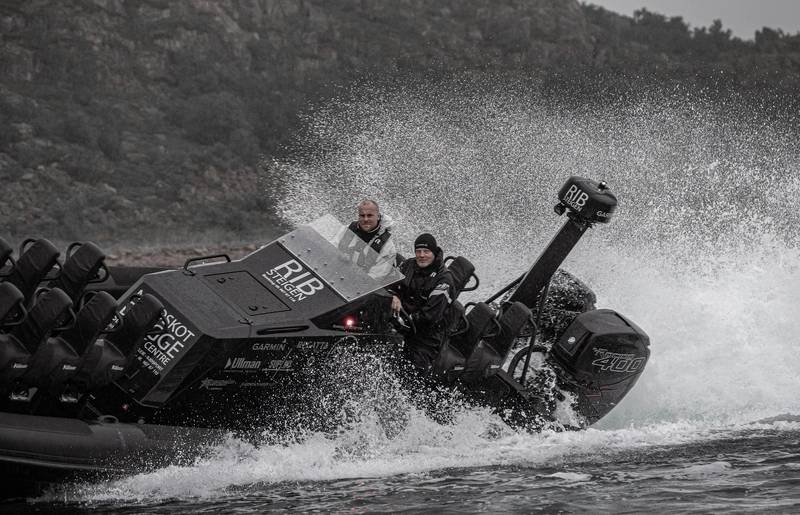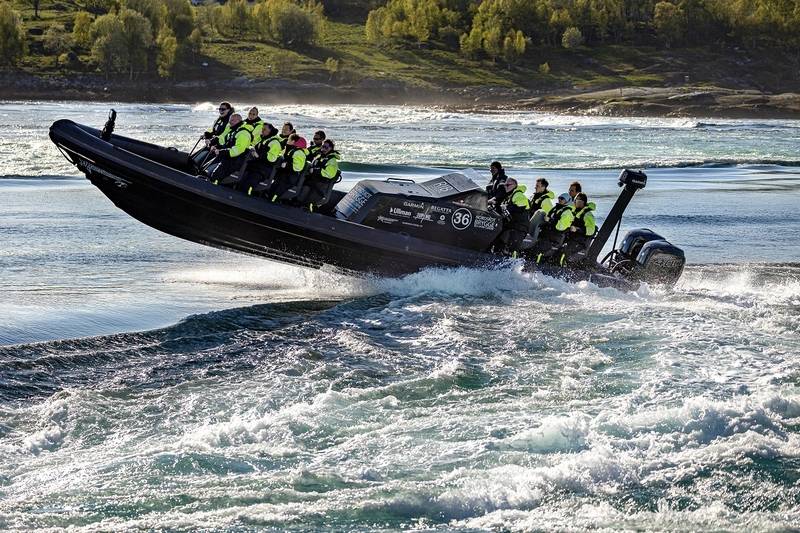A Shocking Success Story: How a Navy Doctor Revolutionized High-speed Boat Safety
For years, operators of high-speed boats have silently endured the physical toll of their profession. Repeated slamming impacts from rough seas caused serious injuries—many of them life-altering. However, one Navy doctor saw these challenges not as an unavoidable consequence but as a problem that could be solved. His solution? A seat that would change the course of high-speed boat safety.
The hidden cost of high-speed operations
Recent research shows that professional high-speed boat operators suffer more severe injuries than seen in almost any other peacetime profession. These injuries are caused by repeated exposure to violent impacts as the boats slam into waves. Most of the damage affects the spine, but severe traumatic brain injuries (TBI) have also been reported due to the violent head jolts caused by butt slams.

For years, it was known that these impacts caused injuries and severe fatigue, impairing combat readiness. But the scale of the problem had been underestimated and marginalized —until one man decided to change that.
Enter Dr. Ullman
In the late 1980s, Dr. Johan Ullman, a medical officer in the Royal Swedish Navy, noticed something concerning. Almost all of the conscripts serving on motor-torpedo boats (MTBs) in his unit complained of back problems after just nine months on board. These complaints were directly tied to the violent impacts experienced during operations.
Realizing the gravity of the issue, Dr. Ullman launched a research project at the University of Gothenburg’s Department of Occupational Orthopedics. His goal was simple: understand the cause of these injuries and develop a solution to protect the operators.

The birth of Ullman Seats
Dr. Ullman’s research quickly led to a breakthrough. By understanding the human body’s natural reflexes and how muscles respond to protect against impacts, he designed a revolutionary seat—a seat with a progressive suspension system that absorbed impacts without needing any moving parts. This design performed far better than anyone had anticipated.
“I humbly named these after myself,” says Dr. Ullman, referring to the now-famous Ullman Seats and the Ullman Leaflex Suspension system.
What followed is history. Today, over 22,000 Ullman seats have been installed in military, police, coastguard, and search and rescue vessels in more than 70 countries. And almost every single one of those seats is still in use.
“They just never break,” Ullman explains. “Structural failure is not an option because it can cause even more severe injuries than the impacts we are trying to prevent.”
Proven protection, zero injuries
The performance of Ullman seats speaks for itself. In over 20 years of use, not a single impact-induced injury has been reported by operators using Ullman seats. Additionally, not a single overboard ejection has been reported—a unique testament to the effectiveness of the seats in even the roughest conditions.
For organizations operating in extreme environments, such as the U.S. Navy SEALs, Norwegian Special Forces, and the Dutch Caribbean Coast Guard, the decision to install Ullman seats has been a game-changer. Each of these organizations conducted extensive trials in extreme sea states and found that Ullman seats provided unparalleled protection against slamming impacts.
A growing list of adopters
As the cost of injuries rises and the need for faster, safer maritime operations increases, many agencies are replacing other suspension seats with Ullman models.
For example, the USSOCOM SEALION project could be put into operation first after installing Ullman seats, specifically designed for the task and named “Daytona.” Similarly, the Norwegian Special Forces, operating in the harshest sea conditions with their Combat Boat 90 (CB90), replaced all of their existing suspension seats with Ullman seats after extensive sea trials.
In the Dutch Caribbean Coast Guard, operators patrol waters where waves often exceed two meters. After a series of at-sea tests, the coastguard replaced all the seats on their 38’ Defiant boats with Ullman Atlantic seats.
A solution for the future
As military threats evolve and the need for speed in high-seas operations increases, Ullman Dynamics continues to expand. This growth isn’t just due to the seats’ superior ability to prevent injuries and reduce fatigue—there’s also a strong economic case. Ullman seats last the lifetime of the boats, require no maintenance, and don’t need spare parts or pre-operation adjustments. They are, hence, cost-effective seats to own and operate.
Every single component of an Ullman seat is designed and developed in-house and produced in NATO countries, with final assembly in Sweden and the U.S.
So, can all boats become good boats just by fitting Ullman seats?
Dr. Ullman acknowledges that while seats are crucial, there’s more to making a high-speed boat safe: “Hull shapes can make a big difference in exposure to slamming impacts, and ride control systems can for sure improve ride quality.
“And don’t forget driver skills. But yes, there’s no doubt—all high-speed boats are better boats with Ullman seats,” he explains.
“High-speed boats are exposed to forces acting in all six degrees of freedom, making this as complex an environment as a fighter jet, however a bit slower. However, the forces acting on the operators are in the same range of magnitudes.”
What makes the Ullman Seats stand out?
- They can mitigate impacts up to 20 g and above, while most other suspension seats bottom out at 5-6 g, making impacts worse. Bottoming has been shown to magnify the hull impacts by up to three times.
- They protect against both vertical and lateral impacts. Impacts containing lateral forces cause four times more injuries than purely vertical impacts.
- They are scientifically proven to reduce the risk of injuries and the physical fatigue that comes from impact exposure.
- They are designed to last the lifetime of the boats without breaking or requiring maintenance.
- With a robust, relevant warranty, they are the most cost-effective investment in safety.
Dr. Ullman’s journey from a Navy doctor trying to protect his crew to a global innovator in high-speed boat safety is a testament to the power of research and determination. His invention has not only revolutionized marine safety but has also set new standards for durability and performance in extreme conditions.
As agencies worldwide continue to adopt Ullman seats, they’re not just investing in equipment—they’re investing in the safety and wellbeing of their people.
